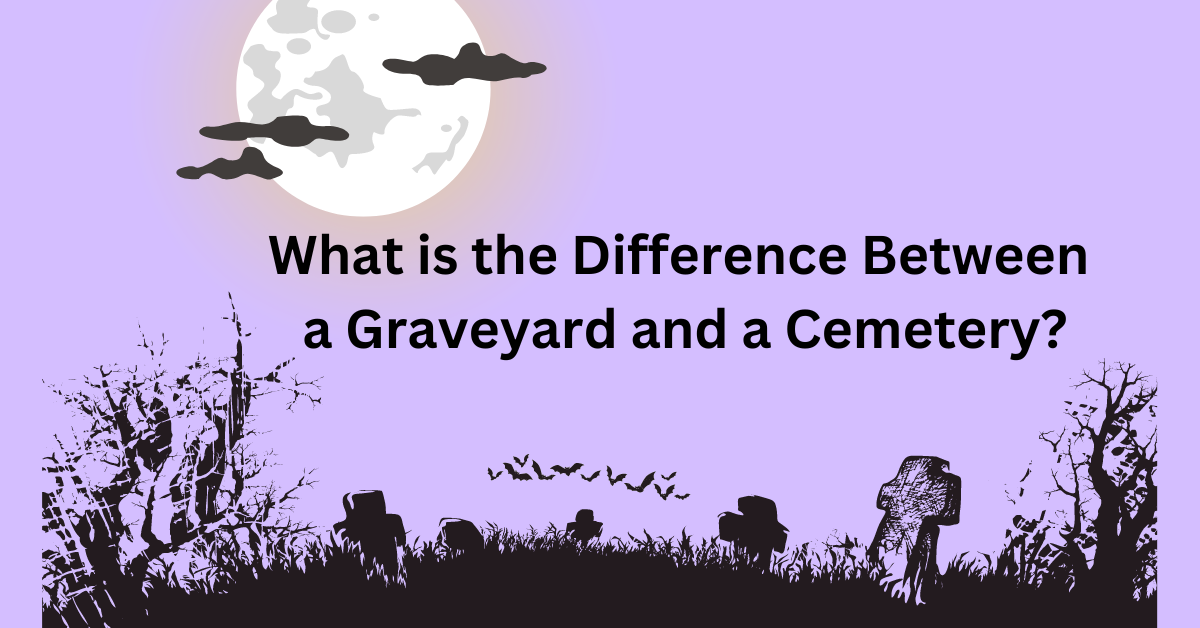Simply put, the final resting places of our loved ones hold a significant place in our hearts.
But did you know they come with their own distinctions?
This might sound a bit peculiar, but graveyards and cemeteries are not the same.
This article will delve into their differences and peculiarities, to help you better appreciate these places of remembrance.
Graveyards: An Extension of Sacred Ground
Historically, ‘graveyard’ referred to a burial place adjoining a church.
It came from the Old English word ‘græf-yærd,’ which can loosely be translated as ‘a garden of graves.’
Location, Location, Location
Graveyards are typically located within the property of a church or a place of worship.
They are much more than just burial places; they serve as a symbolic connection between the living congregation and their ancestors.
- Embedded directly in church compounds
- Often older with historical significance
- Size often limited due to the confines of church grounds
In some rural areas, you might still find small graveyards surrounding ancient churches, brimming with historical narratives and bearing the silent testimony of the community’s lineage.
Solemn Symbols
In a graveyard, the gravestones, mementos, and monuments often carry religious symbology aligning with the church’s beliefs and traditions.
Even the arrangement of graves often occurs in line with religious practices and rituals.
Cemeteries: Designed for the Deceased
The term ‘cemetery,’ derived from the Greek word ‘koimeterion,’ means ‘a sleeping place.’
This terminology became prevalent during the 19th century when the rapid growth of towns and cities necessitated dedicated spaces for burials.
Separate and Planned Spaces
Unlike graveyards, cemeteries are separate establishments, not associated with any church or place of worship.
Cemeteries are carefully planned, large burial grounds designed to accommodate a substantial number of burials.
- Independently located, universally accessible
- Often larger and more structured
Cemeteries were essentially a response to the space limitations of graveyards.
With the rise in population and urbanization, burying the dead within church premises became impractical.
A Diverse Display
Cemeteries often showcase a diversity in tombstones and memorials, reflecting the mixed societal fabric.
They are not tied to specific religious symbols or practices, making them versatile and inclusive for people of various faiths and beliefs.
“Cemeteries are actually quite democratic in nature – equally open to all, regardless of religion, socio-economic status, or creed.” – Unknown
The Blurred Lines
The difference between graveyards and cemeteries has blurred over the years.
The two terms are used interchangeably in common language, and that isn’t necessarily wrong.
Both these places offer us the much-needed space of remembrance, respect, and connection with the departed.
Regardless of their location or the affiliations they carry, they serve an important societal function – providing a sanctuary for the living to honor and commemorate their loved ones.
In conclusion, while these distinctions may not significantly impact the way we perceive these places of rest, it does add an interesting layer to our understanding of societal evolution related to death rituals.
Key Takeaway
We must remember that irrespective of whether it’s a graveyard or a cemetery, these spaces demand our utmost respect and care.
After all, every grave tells a story, and every stone bears witness to a life once lived.
FAQs – What is the Difference Between a Graveyard and a Cemetery?
What is a cemetery?
A cemetery refers to a large, designated area where the dead are buried. Often owned and operated by companies or municipalities, they can have various interment options, including graves, mausoleums, and cremation niches.
What is a graveyard?
A graveyard is a burial ground typically located within the confines of a churchyard. It is usually smaller and older compared to a modern cemetery, serving the immediate vicinity’s burial needs.
What are the main differences between cemeteries and graveyards?
The main differences lie in location, size, and ownership. As previously stated, graveyards are within church premises, smaller, and managed by the church. On the other hand, cemeteries are larger, standalone properties and are typically run by a company or a governmental body.
Can both cemeteries and graveyards hold memorials and monuments?
Yes, both cemeteries and graveyards can have various memorials and monuments. These structures pay respects to individuals or are erected to commemorate significant events.
Are graveyards less regulated than cemeteries?
Graveyard regulations can vary depending on the church and local rules. However, cemeteries can often be more regulated due to their corporate or municipal ownership.
Are graveyards always attached to a church?
Traditionally, yes, graveyards are located on the grounds of a church. However, there may be exceptions to the rule depending on the customs specific to a region or culture.
Can anyone be buried in a cemetery or a graveyard?
Cemeteries usually accept anyone for burial, regardless of religious affiliation. Graveyards, on the other hand, might have restrictions based on membership or affiliation to the church it is connected to.
Which is typically older; a graveyard or a cemetery?
In general terms, graveyards tend to be older because the practice of burying the dead in church grounds predates the establishment of large, standalone cemeteries.
What are mausoleums and cremation niches, and are they found in both cemeteries and graveyards?
Mausoleums are above-ground structures for interment, whereas cremation niches are spaces for storing urns with cremated remains. While they are more commonly found in cemeteries, due to larger size and more organized nature, some large historic graveyards may also have these options.
Is there any special care or maintenance required for graves in cemeteries and graveyards?
Generally, the management of both cemeteries and graveyards bear the responsibility for regular maintenance. However, the actual care and maintenance can vary depending on local customs, the specific rules of the cemetery or graveyard, and the wishes of the deceased’s family.

